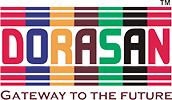The McCarthy Scales of Children’s Abilities was intended to measure children from ages 2 to 8. The scale is very sound. The test produces both a pattern of scores as well as a variety of composite scores, which is a plus. This allows analyzing of both individual sections as well as the overall test. In fact, the concept of combining various subtests to form a composite score is such an important idea that it has become one of the main features in the 2003 fifth edition of the Stanford-Binet scale.
The essence of the test is based on a wide variety of functions that have been long held to be related to human intelligence. There are 18 tests in the battery that sample these different functions, 15 of which are combined into a composite score which is known as the general cognitive index (CGI).


